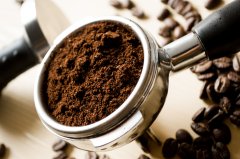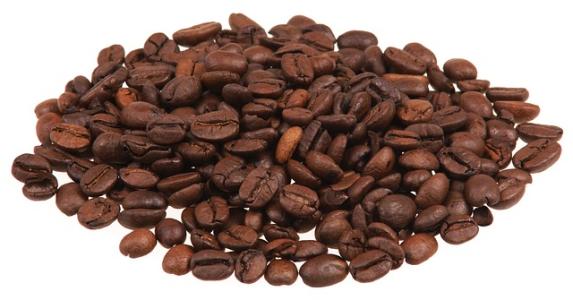What on earth is boutique coffee?
Pay attention to coffee reviews (Weixin Official Accounts vdailycom ) and find a beautiful cafe to open your own shop
Fine coffee was first proposed by Erna Knustsen, known as the "godmother of fine coffee", in the Tea & Coffee Trade Journal in 1974.
It highlights that "only in the most favorable microclimate and soil, can we grow a unique flavor of fine coffee", aiming to distinguish it from the bulk commercial coffee on the New York Futures Exchange.
Less unique regional flavor, it is not fine coffee, but reduced to general commercial beans or stale canned coffee (large canned coffee beans or powder).
Ms. Knudsen first proposed the concept of fine coffee, emphasizing the relationship between upstream growing environment and coffee quality.
Fine coffee is a trade model

Speaking of which, the most fundamental and remarkable feature of fine coffee is not directly related to the level and variety of coffee, but a trade model.
This is the logical origin of fine coffee, and everything else is derived from this, or appearance, including the level, variety and extraction method of coffee.
Traditional coffee bean trading is that after a large number of bean traders buy in the producing country, they sell to producers, large chain cafes, etc. through the international futures market. In this way, all kinds of beans mixed together, you do not know what you bought, the same bag of beans, may be mixed with more than a dozen varieties, from different environments, different processing methods of multiple origins. As for taste, there is no guarantee of the quality of such beans, even if they are freshly baked.
Fine beans, on the other hand, are coffee shops and other cooked bean producers (coffee beans are plants, raw beans cannot be eaten, we buy roasted cooked beans) directly contact coffee farmers (estates, farms), called direct trade or fair trade.
Of course, direct trade also involves many small bean traders.
An important part of direct trade is that buyers need to instruct coffee farmers how to grow, harvest, and treat coffee beans, which are all very important factors in the taste of coffee beans.
Direct trade can also bring more benefits, such as controllable quality, traceability, less intermediate links can also increase the purchase price, increase the enthusiasm of coffee farmers, but will not increase the final sales price much.
For example, intellectuals, anti-culture, blue bottles and other top boutique cafes in the world, the price is almost the same as Starbucks in the same city, but the taste is very different.
At the same time, direct trade will make buyers strive to find better quality coffee beans, find more suitable areas for growing coffee trees, and find coffee farmers with more experience and technology and more open-minded.
In this way, the quality of coffee beans naturally improved a lot, and the taste style was also guaranteed. Not only does it taste good, but it also tastes controllable.
When you like a particular flavor, you can always buy that coffee bean, although the flavor will vary with the climate of the year, but the overall style and quality are roughly the same.
This is another feature of fine coffee, and taste, quality directly related to the "origin characteristics." This is also why, after the rise of the boutique coffee wave, two extraction methods, hand-brewed single (single variety coffee beans) and SOE(single espresso coffee), began to gain popularity.
At the same time, because the quality of coffee beans has been guaranteed, espresso traditional blend beans, formula also began to stabilize. There is no need to look for new formulas in seasons like before, and quality cannot be guaranteed.
Additional items: suitable extraction method
Finally, although fine coffee has no direct relationship with extraction method, it has a great influence on the choice of extraction method.
In an era when you don't know where your beans come from, hand flushing isn't a very reliable option. So although all kinds of drip extraction methods have been around for more than a hundred years, they have hardly caught on in the past.
After the rise of fine coffee, hand flushing is popular, this is because hand flushing has unique advantages in expressing coffee flavor. It can be said that hand brewing is the extraction method that best shows the characteristics of coffee origin. At the same time, the taste of hand flushing is mild and easy for more people to accept. The price of hand-washing appliances is relatively low, which is also conducive to popularization.
However, this does not mean that fine coffee is limited to hand brewing. In fact, any extraction method can be used for fine coffee. However, the most convenient to control variables and easy to produce stable products are hand brewing and Italian semi-automatic coffee machines.
Everyone has different definitions and standards for good coffee. Expensive coffee is not necessarily fine coffee, and expensive coffee is not necessarily bad. The most important thing is to let more people get the perfect flavor of each coffee bean.
Important Notice :
前街咖啡 FrontStreet Coffee has moved to new addredd:
FrontStreet Coffee Address: 315,Donghua East Road,GuangZhou
Tel:020 38364473
- Prev

History, culture, stories and allusions of Yemeni coffee boutique beans
Professional barista exchanges please follow the coffee workshop (Wechat official account cafe_style) Yemeni coffee boutique beans history and culture, stories and allusions using the most primitive way to produce real Yemeni coffee is not common. After the fruit is ripe on the trees, the farmers harvest it by hand and dry it on the roof of the stone house built by the mountain. The process of shelling meat depends entirely on crude stone grinding equipment. Due to
- Next

Taste characteristics of Yejashefi Coffee beans Story of Yega Xuefei Coffee Bean treatment
Following caf é comments (Wechat official account vdailycom) found that the Beautiful Caf é opened its own shop in the Sidamo Gedeo district of Sidamo province. Today, Ethiopia is an important coffee producer, with about 12 million people engaged in coffee production and a major exporter of Arabica coffee beans in Africa. The high-quality coffee here is of excellent quality and is worth looking for. In Ethiopia
Related
- Detailed explanation of Jadeite planting Land in Panamanian Jadeite Manor introduction to the grading system of Jadeite competitive bidding, Red bid, Green bid and Rose Summer
- Story of Coffee planting in Brenka region of Costa Rica Stonehenge Manor anaerobic heavy honey treatment of flavor mouth
- What's on the barrel of Blue Mountain Coffee beans?
- Can American coffee also pull flowers? How to use hot American style to pull out a good-looking pattern?
- Can you make a cold extract with coffee beans? What is the right proportion for cold-extracted coffee formula?
- Indonesian PWN Gold Mandrine Coffee Origin Features Flavor How to Chong? Mandolin coffee is American.
- A brief introduction to the flavor characteristics of Brazilian yellow bourbon coffee beans
- What is the effect of different water quality on the flavor of cold-extracted coffee? What kind of water is best for brewing coffee?
- Why do you think of Rose Summer whenever you mention Panamanian coffee?
- Introduction to the characteristics of authentic blue mountain coffee bean producing areas? What is the CIB Coffee Authority in Jamaica?

